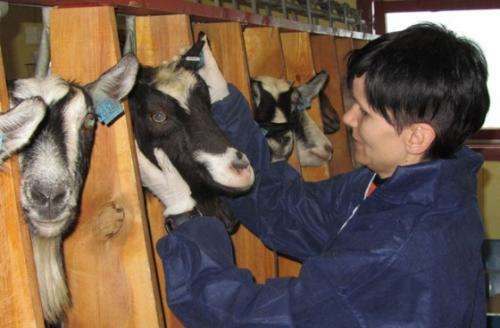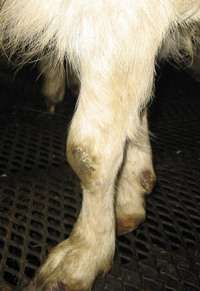Stockmanship and animal welfare in the Norwegian dairy goat industry

The stockperson is an important influence on farm animal welfare. In her PhD thesis, Karianne Muri has investigated some of the many ways in which stockpeople have an impact on the welfare of the animals under their care
The stockperson is an important influence on farm animal welfare. In her PhD thesis, Karianne Muri has investigated some of the many ways in which stockpeople have an impact on the welfare of the animals under their care. This includes the quality of human-animal relationships, recognition and management of pain and disease, and decisions related to housing, health planning and disease control measures. The promotion of good stockmanship and high standards of animal welfare requires that stockpeople are updated with the most recent knowledge about animal welfare on a regular basis.
The quality of human-animal relationships determines the animals' development of confidence or fear of humans. Disease and pain are also important causes of reduced animal welfare. However, the assessment of pain is difficult, particularly in species of prey (like most farm animals), as they tend to hide obvious signs of weakness. The Norwegian dairy goat industry has previously had problems with certain chronic infectious diseases that may reduce the welfare of infected animals. The Goat Health Service runs a disease control programme called "Healthier Goats", with the aim of eradicating paratuberculosis (Johne's disease), caseous lymphadenitis and caprine arthritis-encephalitis (CAE).

The thesis is based on four scientific papers which present results from two studies:
1.A questionnaire to explore stockpeople's attitudes, empathy and assessment of pain experienced by goats, and their management of disease and pain in goats, which was responded to by 260 stockpeople.
2.The testing of an on-farm welfare assessment protocol in 30 dairy goat herds, of which 15 had completed the "Healthier Goats" eradication programme, and 15 had not yet started work related to disease eradication.
The work presented in the thesis illustrates that there are large individual differences in how stockpeople rate goats' pain experience and how frequently they provide the goats with veterinary attention when they suffer from disease or pain. The welfare assessments revealed certain challenges related to health, behaviour and housing. The welfare of goats in "Healthier Goats" herds was better in other aspects than just the targeted diseases. As an example, the goats were calmer.
The welfare assessment protocol can be tailored to specific applications, e.g. animal welfare inspections or monitoring the effects of health plans. However, there is a need to further assess the reliability and validity of animal-based welfare indicators for goats.
Karianne Muri defended her PhD-thesis, entitled "Stockmanship and animal welfare in the Norwegian dairy goat industry" at the Norwegian School of Veterinary Science on March 8th 2013.
Provided by Norwegian School of Veterinary Science



















